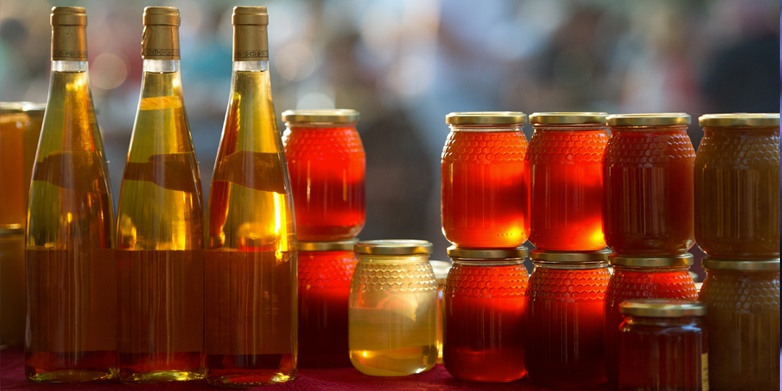Mead Making Recipe
Words by Gavin Smith
Honey mixed with hot water ( not boiling) is the base sugar. On its own it develops a limited mead.
Proportions develop by measuring the specific gravity of your mixed base with your hydrometer.
Start with three litres and one kilo honey. Measure and decide what wine you prefer.
Step 1:
The higher the honey content the sweeter and stronger the alcohol content will be.
Mix a brew volume 1 litre to similar strength to make up a sweet wine to fill the level up to the start of the curve of the carboy / demijohn.
This is your air space that provides oxygen for the yeast.
Step 2:
Add more water to dilute to produce a table wine. The more water the dryer the wine will be.
Tannins, acid and flavonoids are added.
Raisins (10), one quarter of a washed orange (No Spray residue), cut small, skin and al,l plus a stick of cinnamon are added.
Yeast
Yeast comes dried and needs to be awakened and fed. You can raise the yeast with a nutrient in hot water and pitch it when active or add to your hot mix in the carboy / demijohn.
One teaspoon of yeast and one teaspoon of nutrient is enough for 5 litres.
Shake to mix ingredients for at least two minutes. Everything is now well wetted and mixed.
The temperature should be body heat around 36 degrees. Keep it warm for as long as possible to achieve fermentation which often starts in the first hour or so.
Heat pads, hot water bottles, electric blankets help if it is cold weather( never be tempted to put it on a hot plate). Sunshine is good.
Put in your bubbler and stopper. Add water to the bubbler and watch and wait for your first bubbles. A slow regular flow of carbon dioxide from your mix means you have started well.
There is a wide range of yeasts to choose from. The brew shop should have yeasts for all wines and beers and mead. The nutrients and yeasts come in packets and should be clearly labelled to avoid confusion with other materials such as steriliser. It has happened.
Sterilise everything and rinse well before using. Use spring or demineralised water. You can buy 7 litre to 11 litre from Coles or Officeworks etc. You can re-use the containers to make another brew. Drill a hole to take another bubbler / air lock.
Spin your hydrometer to remove air bubbles when measuring in your measuring cylinder.
Rack / decant your mead as soon as it stops fermenting. Time wise it may be months.
All materials sink and the liquid clears.
Syphon off mead into sterile bottles, demijohn or jar. Add flavour to suit and make up volume for lost liquid in the must on the bottom.
Pineapple juice, more honey mixed with water, some port wine, whatever suits your taste may be added at this stage. Bottle and age or drink as you wish.
The last batch I made was left too long in the must. The flavour needs adjusting.
Rack as soon as ferment is finished.
Happy brewing, Gavin

